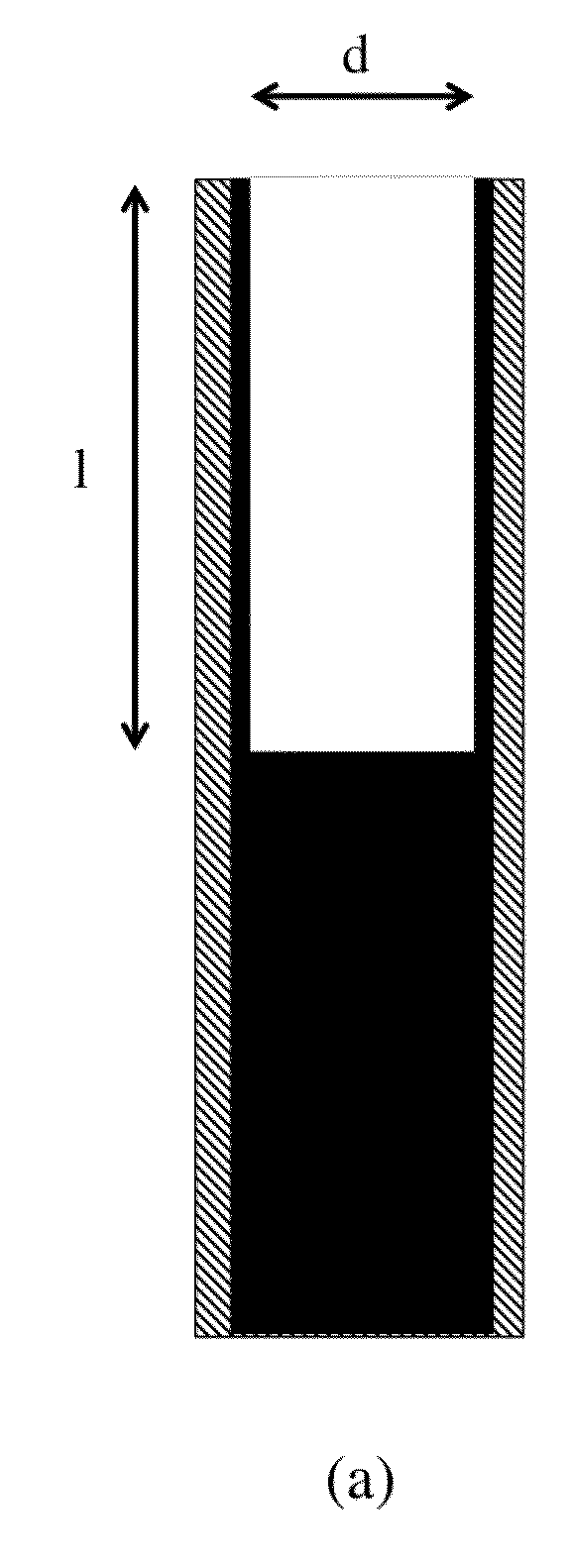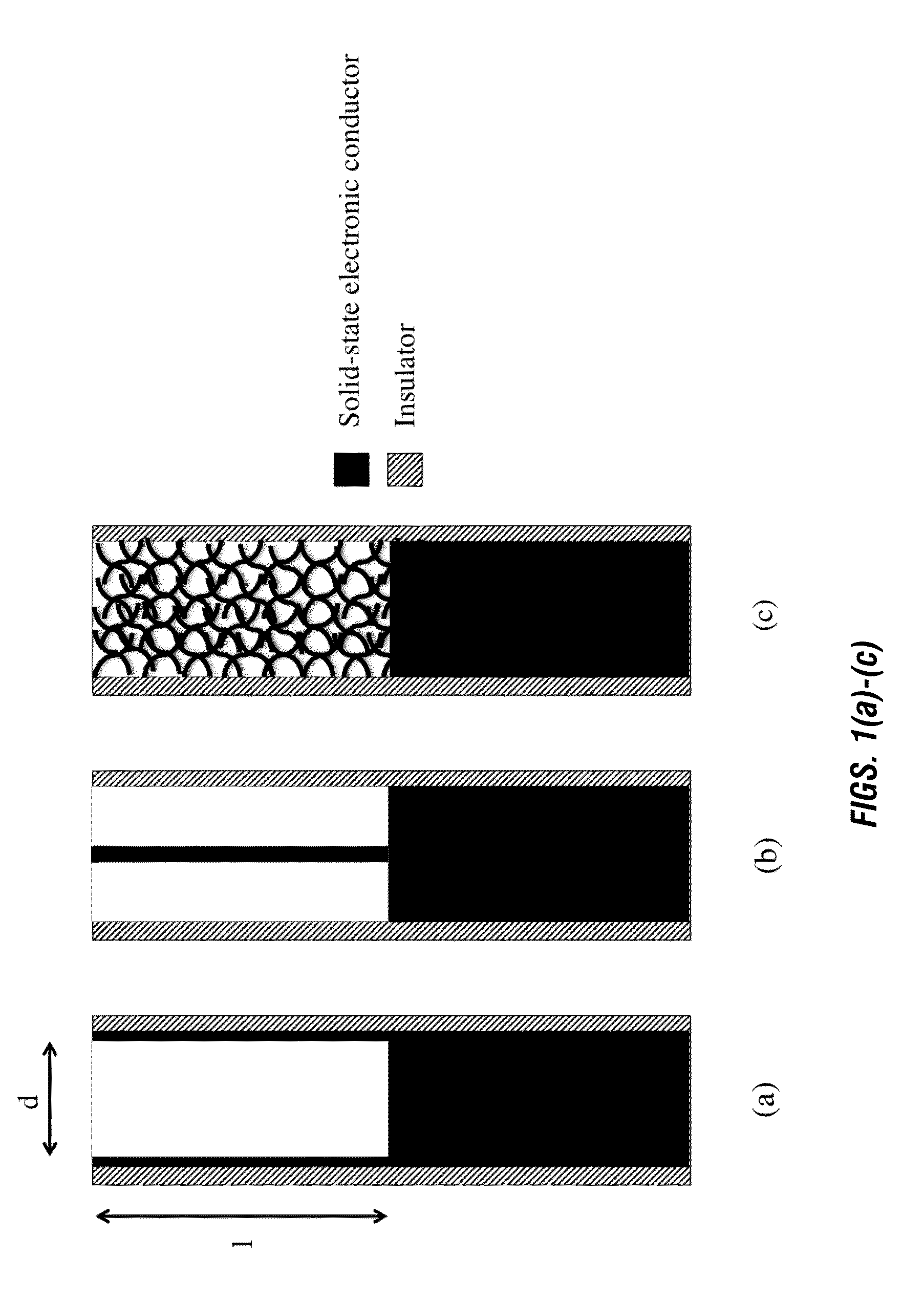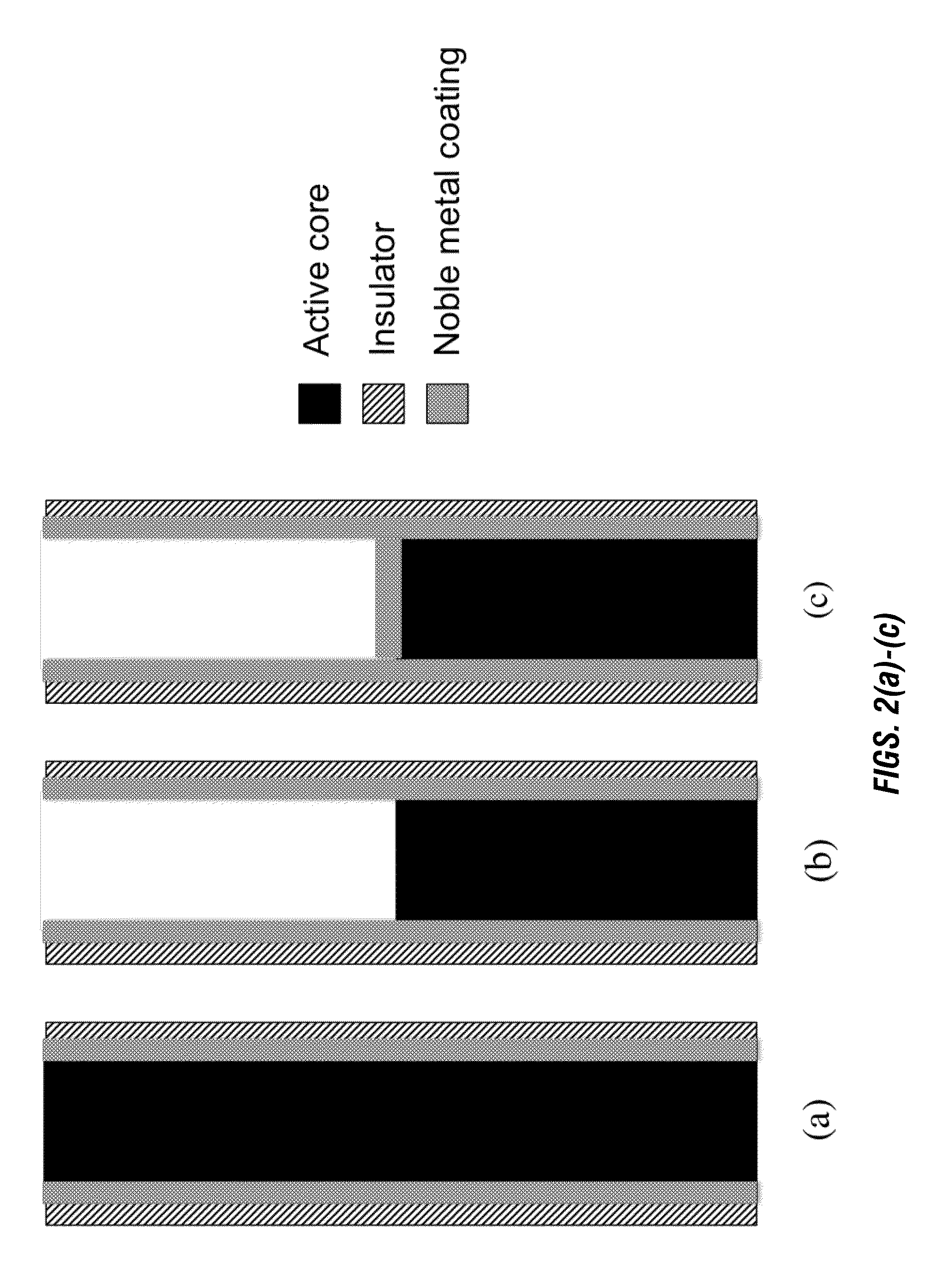Micro-reaction chamber microelectrodes especially for neural and biointerfaces
a micro-reaction chamber and electrode technology, applied in the direction of bioelectric signal measurement, diaphragm, immobilised enzymes, etc., can solve the problems of limited useful thickness of these coatings, increased interfacial impedance and increased charge transfer density for a given stimulation pulse, and limited interfaces between instruments and tissues. , to achieve the effect of increasing the charge passing capacity, maximizing the surface area, and high surface to volume ratio
- Summary
- Abstract
- Description
- Claims
- Application Information
AI Technical Summary
Benefits of technology
Problems solved by technology
Method used
Image
Examples
examples
[0034]Embodiments of the present invention are further defined in the following non-limiting examples and in B. Shanmugasundaram and B. J. Gluckman, “Micro-reaction chamber electrodes for neural stimulation and recording” Proc. IEEE Eng. Med Biol. Soc. 2011, pp. 656-659 which is incorporated by reference herein in its entirety. It should be understood that this example, while indicating a certain embodiment of the invention, is given by way of illustration only. From the above discussion and this example, one skilled in the art can ascertain the essential characteristics of the invention, and without departing from the spirit and scope thereof, can make various changes and modifications of the embodiments in the invention to adapt it to various usages and conditions. Thus, various modifications of the embodiments of the invention, in addition to those shown and described herein, will be apparent to those skilled in the art from the foregoing description. Such modifications are also ...
PUM
 Login to View More
Login to View More Abstract
Description
Claims
Application Information
 Login to View More
Login to View More - R&D
- Intellectual Property
- Life Sciences
- Materials
- Tech Scout
- Unparalleled Data Quality
- Higher Quality Content
- 60% Fewer Hallucinations
Browse by: Latest US Patents, China's latest patents, Technical Efficacy Thesaurus, Application Domain, Technology Topic, Popular Technical Reports.
© 2025 PatSnap. All rights reserved.Legal|Privacy policy|Modern Slavery Act Transparency Statement|Sitemap|About US| Contact US: help@patsnap.com



